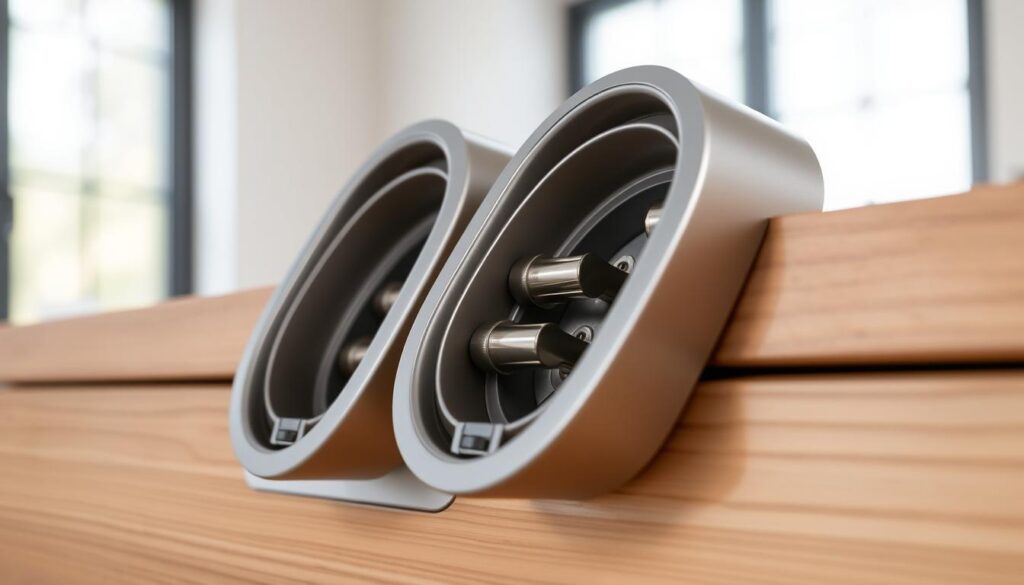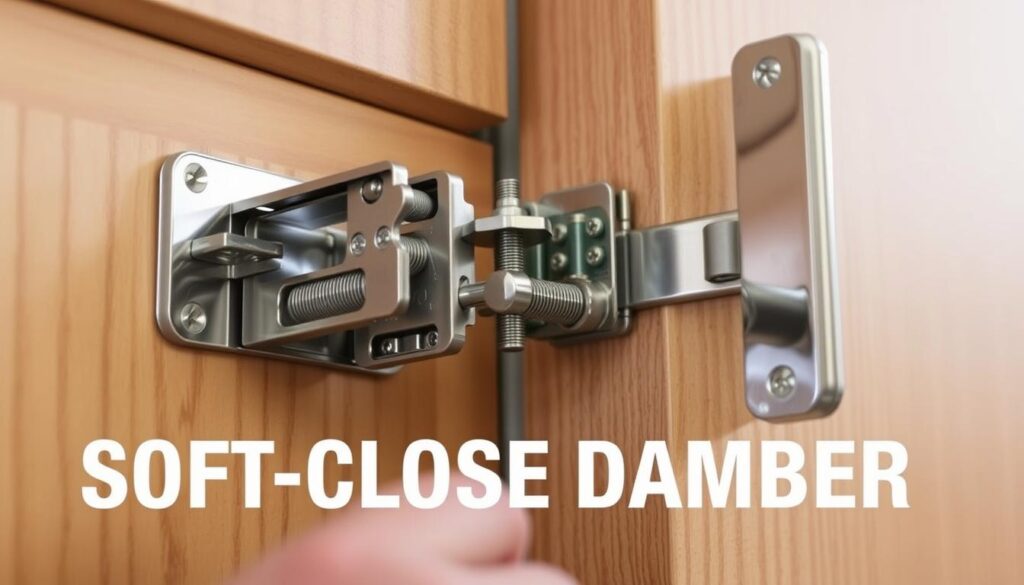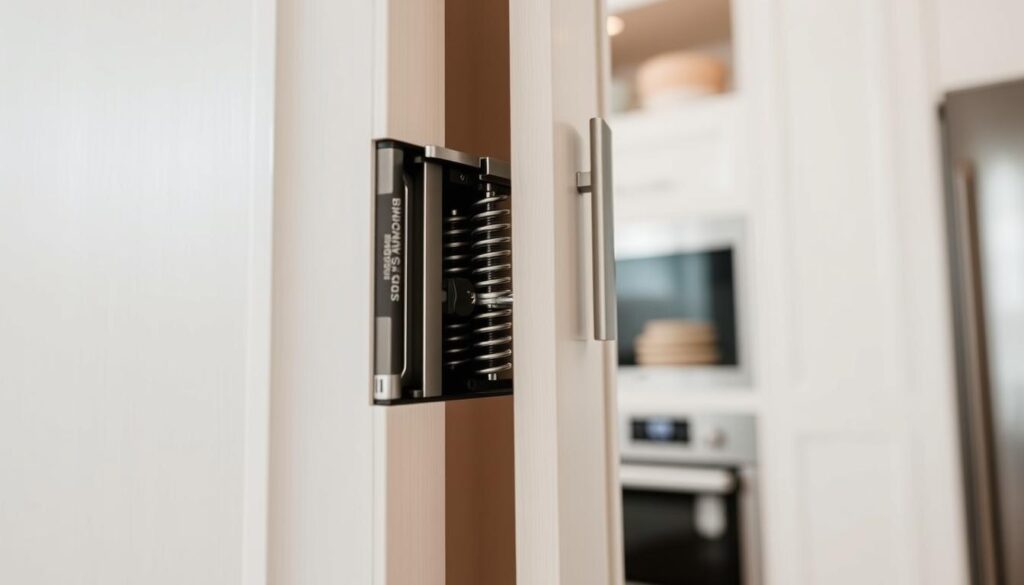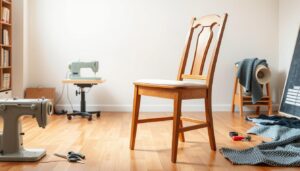Are you tired of your kitchen doors slamming shut, making a loud noise and potentially damaging the cabinet structure? The culprit might be worn-out soft-close mechanisms, which are designed to prevent just that.
When these mechanisms wear out, your doors may start closing too quickly or making unpleasant noises, indicating it’s time for a change. Fortunately, replacing them is a relatively simple DIY task that can restore the smooth and quiet closing action of your doors.
With the right tools and a bit of guidance, you’ll be able to give your kitchen a quieter and more refined touch.
Key Takeaways
- Identify faulty soft-close dampers in your kitchen.
- Select the right replacements for your kitchen doors.
- Install new soft-close mechanisms with ease.
- Restore the smooth and quiet closing action of your doors.
- Extend the life and functionality of your kitchen cabinetry.
Understanding Cabinet Soft-Close Dampers
Soft-close dampers play a vital role in ensuring your cabinet doors close smoothly and quietly. They are designed to provide a controlled closing action, preventing doors from slamming shut.
What Are Soft-Close Dampers?
Soft-close dampers are adjustable mechanisms ideal for kitchen, bedroom, and bathroom cabinets. They’re designed for use with 110-degree full overlay hinges and feature adjustable damping pressure on both the front and backside.
Signs Your Dampers Need Replacement
If you notice any of the following signs, it may be time to replace your soft-close dampers:
- Cabinet doors slamming shut instead of closing gently
- Unusual noises during door closure, such as clicking or squeaking
- Inconsistent closing action, where doors sometimes close smoothly but slam at other times
- Visible damage to the damper unit, including cracks or leaking fluid
- Doors remaining slightly ajar rather than closing completely

Choosing the Right Replacement Dampers
To ensure smooth operation, you need to choose the right replacement dampers for your kitchen cabinets. This involves considering several key factors to guarantee compatibility and optimal performance.
Adjustable Soft-Close Damper Options
If you’re looking for versatility, adjustable soft-close dampers are an excellent choice. You can buy adjustable soft close dampers UK from various suppliers, ensuring you find the perfect fit for your kitchen cabinets.

These dampers are designed to be highly adaptable, accommodating different cabinet configurations and door sizes. For instance, some models are unhanded, meaning they can be used on either the left or right side, and are made of durable plastic.
Compatibility with Cabinet Hinges
Cabinet hinge compatibility is crucial when selecting replacement dampers. Here are some key considerations:
- Cabinet hinge compatibility is perhaps the most critical factor when selecting replacement dampers for your kitchen cabinets.
- Most modern dampers are designed to work with specific hinge types, with 110-degree full overlay hinges being among the most common in contemporary kitchens.
- Some dampers mount directly to the hinge arm, while others attach to the cabinet frame adjacent to the hinge.
- Verify whether your replacement dampers are “handed” (specific to left or right doors) or “unhanded” (usable on either side).
- The weight capacity of the damper must match your cabinet door specifications—heavier doors require stronger dampers or multiple units.
By focusing on these details, you can ensure that your replacement dampers provide the desired soft-close functionality, enhancing the overall user experience in your kitchen.
How to Replace Cabinet Soft-Close Damper
Replacing the cabinet soft-close damper is a straightforward process that can significantly enhance your kitchen’s functionality. To start, you’ll need to understand the steps involved in replacing the damper.
Tools and Materials Required
Before you begin, ensure you have the necessary tools and materials. You’ll need a new soft-close damper, which can be purchased for £18.76 per pack of 5, and a screwdriver. The new damper should have adjustable damping pressure on both the front and backside.
Removing the Old Damper
To remove the old damper, carefully disconnect it from the cabinet hinge and gently pull it out from its mounting. Take note of the mounting clips or screws for the new installation.
Installing and Adjusting the New Damper
When installing the new damper, follow these steps:
- Position the new soft-close damper in the same location as the old one, ensuring proper alignment with mounting holes or clips.
- Secure the damper with the provided screws, being careful not to overtighten, which could damage the plastic housing.
- For doors wider than 715mm, consider installing two dampers for optimal performance.
- Test the door’s closing action and adjust the damping pressure using the adjustment mechanisms on the front and backside of the unit.
- Fine-tune the closing speed by making small incremental adjustments until the door closes smoothly and quietly.

By following these steps, you can successfully replace your cabinet soft-close damper and enjoy the benefits of smooth, quiet door operation.
Conclusion
A successful cabinet soft-close damper replacement is a straightforward DIY task that can greatly improve your kitchen’s overall feel. By choosing the right replacement dampers and following the correct installation procedures, you can restore the smooth, quiet functionality of your kitchen cabinets.
Key benefits of replacing your cabinet soft-close dampers include:
- Restoring the smooth, quiet operation of your kitchen cabinets without the need for complete replacement.
- Enjoying years of reliable service from your new dampers, protecting both your cabinets and your peace of mind.
- Extending the lifespan of your dampers through regular maintenance, including occasional cleaning and adjustment.
- Having the satisfaction of completing a DIY project that not only saves money but also provides valuable experience for future home improvement tasks.
- Seeking additional guidance from a cabinet specialist if you encounter persistent issues after replacement.
By following these steps and tips, you can ensure a successful replacement process. Your kitchen cabinets will benefit from the upgrade, and you’ll have the added satisfaction of having completed the task yourself.



